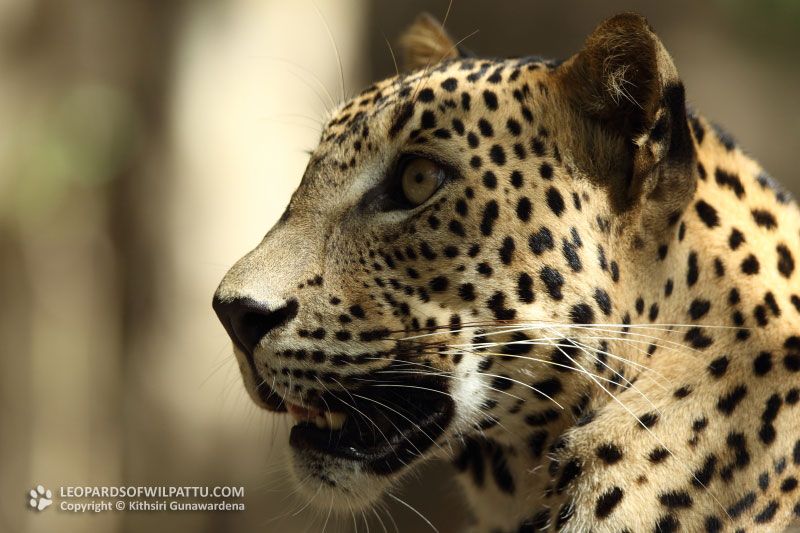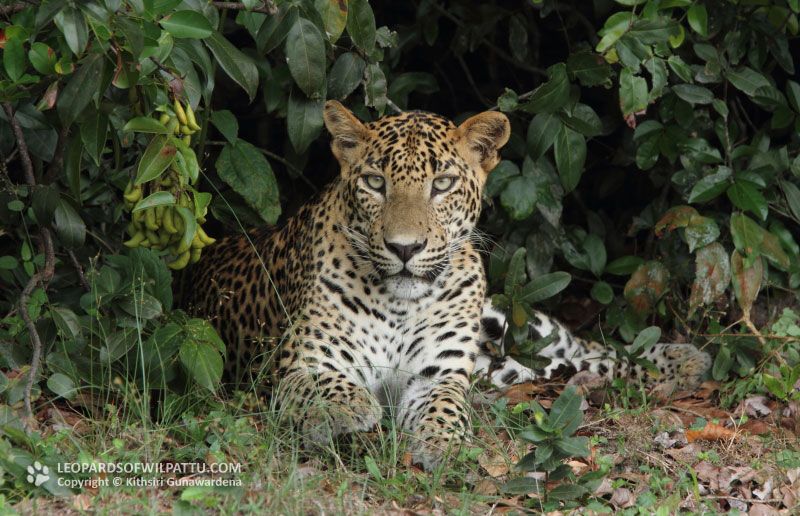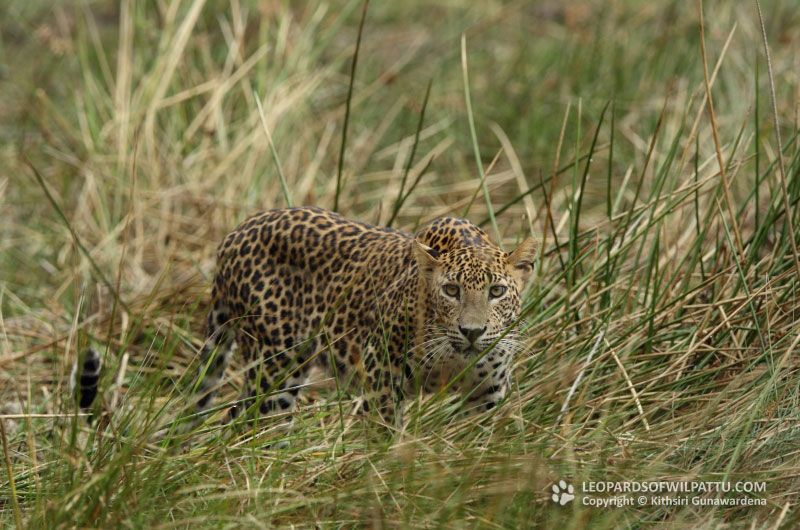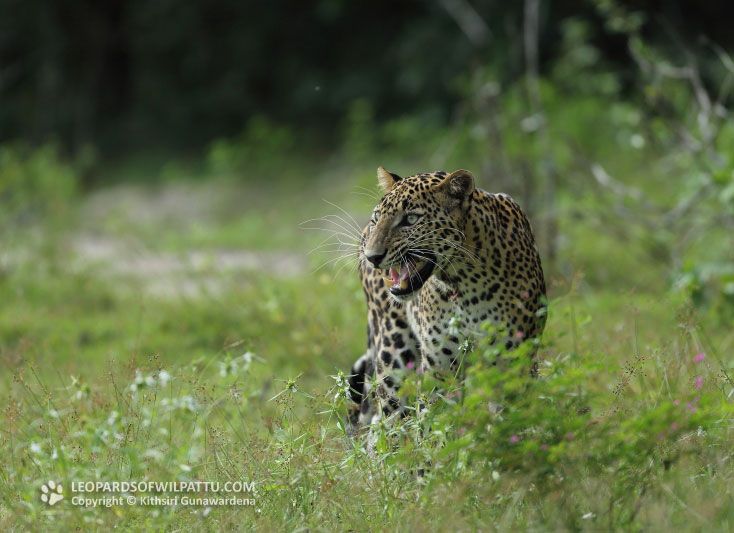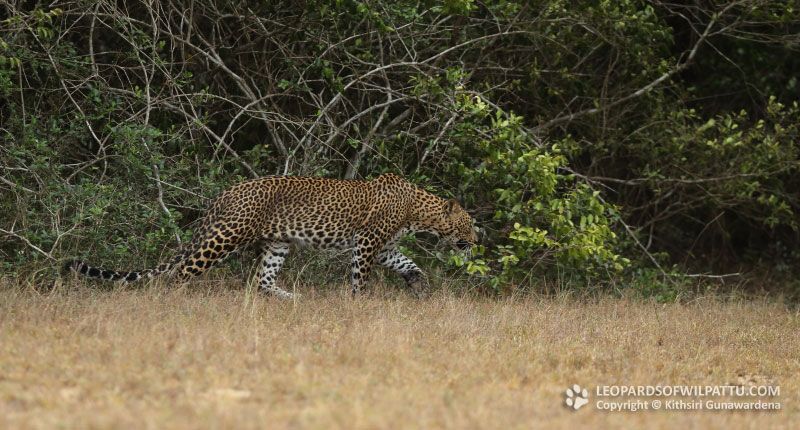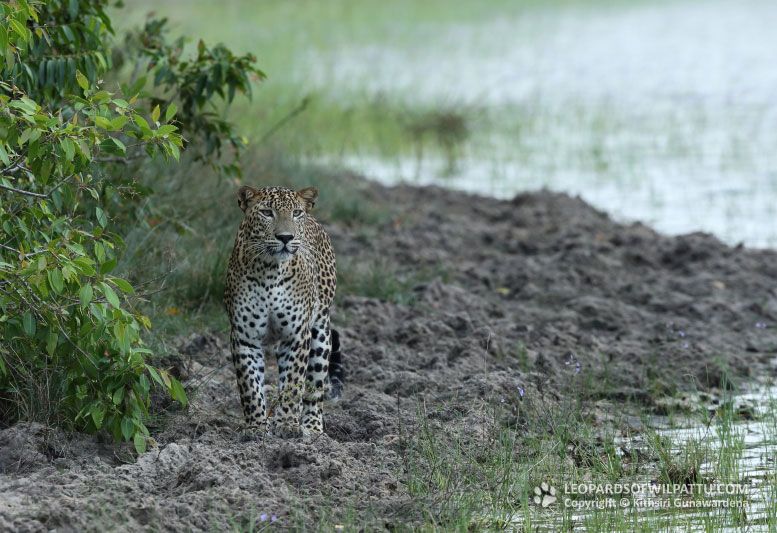
Mammals ‹‹ Go Back
As I have included a detailed write up on this species under the link cats in Sri Lanka and included notes on each leopard photographed and named in the park under leopards of Wilpattu, this section will only be limited to a discussion on the status of leopards at Wilpattu National park.
The conservation status of this species is regarded as endangered (National Red list 2012) and it is a species strictly protected under the Fauna and Flora Protection Ordinance as amended by Act No. 22 of 2009.
My first experience of a leopard in the wild was in 1975, when I was about 10 years of age. My father had booked the bungalow at Lahugala that used to be owned by the Irrigation Department, to take the family on a holiday for a few days during my school holidays. One morning around 8.00 a. m we were at the well drawing water, a short distance from the bungalow and heard the alarm calls of a troop of Grey Langurs. Even though the bungalow keeper alerted us to the possibility of a leopard nearby we were not too excited as many in the group were skeptical. Even though elephants were plentiful in the tank no one in the group had ever seen a leopard close to the bungalow. However we were quite surprised when the bungalow keeper who was with us whispered sir kotiya Kotiya. As we watched a leopard jumped on to the tree where the langurs were making alarm calls, which created absolute pandemonium among the troop, and jumped off after a few minutes. As the leopard was about 50-60 meters away we were not able to be certain whether it succeeded in making a kill. To me, the leopard, even at that distance appeared quite large, perhaps because I was quite small. I was horrified with the thought of it visiting the open bungalow at night and did not sleep well at all. I would have been the most relieved to leave Lahugala the following day.
In a report published by the Smithsonian Institute in 1972, John F Eisenberg and Melvyn Lockhart who conducted a 14 month extensive survey in Wilpattu National Park states that the average home range of a leopard inhabiting the villu area is approximately 8 to 10.5 square kilometers based on their observations of 5 adult male leopards. However their estimation of the leopard population in the park is questionable as I have already photographed and identified 19 leopards from the limited area that I have travelled in the park. Also there are no reasons to believe that the leopard population in 1972 could have been less than what it is today.
On page 68 of the said report they make the following statement
Since the old park was roughly 600 square kilometers, we can assume that overall there could be no more than approximately 20 resident leopards utilizing the park on a year long basis; however, these figures are based on crude densities. Ecological densities, that is, the actual density of game in a given microhabitat, average two to five times that of the crude density depending on the season. Thus, the actual home range of the leopard can be as small as 8 to 10 square kilometers within the villu habitat during the dry season and still support him with a reasonable amount of food (Tables 9 and 10, see also Tables 14 and 15).
Considering our census efforts, we find that the theoretical maximum of twenty leopards is quite realistic for the park and, in fact, we can delineate partial ranges for some eighteen animals within the park.
Even though I have not been able to photograph, I have seen photographs of at least 6 more leopards from the commonly sued roads between Walas Wala up to Panikkar Villu and Tala Wila.
Another very interesting factor about leopard sightings in Wilpattu is that most are of sub adults whereas most sightings in Yala block 1 are of adults and particularly dominant males. Out of the 19 leopards that I had photographed in 2012 & 2013 at Wilpattu, 14 (about 75%) are sub adult leopards indicating the presence of a bigger population than assumed by Eisenberg and Lockhart. With the exception of a few adult leopards such as the Borupan Wila Female (BWF 1) and Panikkar Villu Male (PWM 1) perhaps many of the adults are yet to get used to the vehicles as the park opened in 2009 and still prefer to avoid vehicles or be nocturnal where as the sub adults born on or about the time the park opened are far more tolerant of the visitors.

